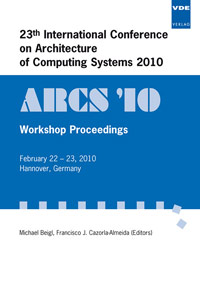Redundancy Aware Clustering via Centroid Localization Technique
Konferenz: ARCS 2010 - 23th International Conference on Architecture of Computing Systems
22.02.2010 - 23.02.2010 in Hannover, Germany
Tagungsband: ARCS 2010
Seiten: 7Sprache: EnglischTyp: PDF
Persönliche VDE-Mitglieder erhalten auf diesen Artikel 10% Rabatt
Autoren:
Salzmann, Jakob (Institute of Applied Microelectronics and Computer Engineering, University of Rostock, Germany)
Inhalt:
This paper investigates the energy-saving organization of sensor nodes in large wireless sensor networks. Due to a random deployment used in many application scenarios, much more nodes need to be deployed to achieve a complete sensor coverage than theoretically needed in case of an ideal deployment. Consequently, most of the deployed nodes are redundant and can be switched-off for a long time to save energy. A well-known principle to detect the redundancy of nodes is to divide sensor network into regular cells. Assuming a well chosen cell size, depending on transmission range and sensing range, it is possible to switch-off all nodes but one per cell. The challenge of this idea is the required exact position estimation of each node to assign its correct cell. This demands for the presence of location aware anchor node and consumes a lot of calculation and transmissions and may be even unachievable. Centroid localization is an already used approach which localizes an unknown position as the centroid of neighboring beacon nodes. Depending on several parameters, an area will be divided into subareas where all unknowns are neighbors of the same beacon nodes and are therefore located at the same point. The resulting subareas differ in shape and size. In the current work, we combine the centroid localization technique and the cell division idea. With regular arranged beacons, we utilize the emerging cells for the detection of redundant nodes. Thereby, our beacon based clustering guarantees connectivity, coverage and energy-aware network activity.


